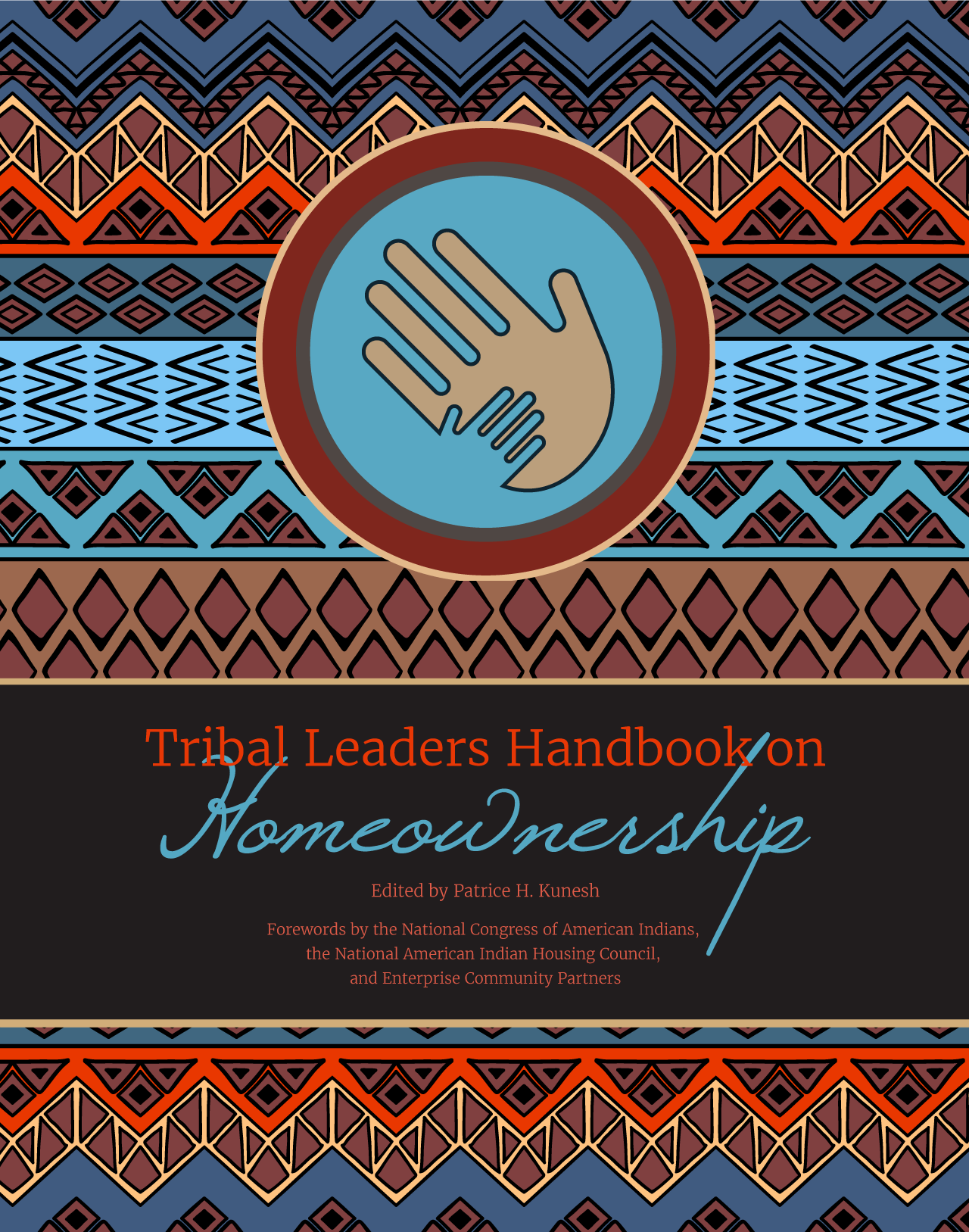How did Indian land get the complicated status it has today? This historical overview lays out the origins of the land tenure system in Indian Country – providing a basic primer on both the history and the law behind the property ownership patterns throughout Indian Country.
Original Tribal Property Rights to Colonization
Prior to European contact, Native peoples abided by their own systems for recognizing and enforcing property rights to their territory and resources. These rights, including individual property rights, were regulated by each tribe’s customs and norms.
When Europeans arrived in North America, they encountered a vast array of tribal nations with well-established property systems. European legal doctrine asserted a form of dual sovereignty in the Americas. On the one hand, European states asserted the right to exclude all outside powers (e.g., other European nations and nationals) from territories they claimed or acquired from other European powers. On the other hand, within these areas, Europeans recognized tribal ownership and self-governance over their own lands, so that those lands could only be acquired by Europeans through purchase from tribes or the concept of “just war.”
The term Indian Country was first used in the Royal Proclamation of 1763, following Great Britain's acquisition of French territory in North America. Drawing a line referred to as the “Proclamation Line” along the spine of the Appalachian Mountains, the Proclamation formally reserved land west of the Appalachian Mountains as Indian Country, and forbade non-Indian settlement in this territory. After the formation of the U.S., the line quickly moved westward, and the term then became more closely aligned with the Indian reservations created by treaties, statutes, and executive orders.
The U.S., Treaties, Laws, and the Supreme Court
The early treaties between European nations and tribes reflected a nation-to-nation relationship, where trade and commerce, and agreements of protection were formalized in treaties. In these dealings, tribes were recognized as sovereigns, having the authority to cede, transfer, or convey their lands.
After the American Revolution, while the U.S. assumed Britain’s ownership rights of lands previously purchased or acquired, the U.S. did not acquire title or rights of ownership to all lands within its broader boundaries. The new national government continued to recognize tribal ownership and self-governance over unceded lands and that those lands could only be acquired through purchase.
Conflicts over the validity of title and ownership of lands acquired from tribes quickly escalated to the new U.S. Supreme Court. In 1823, the Court decided Johnson v. M’Intosh, a historic decision that forever altered the property rights of all tribes, as well as the relationship between them and the new government.
The case involved a conflict between two non-Indian parties who claimed ownership of the same large tract of land, one obtained directly from tribes and the other through a federal land patent. In simple terms, the Supreme Court recognized the superior power of the federal government to acquire lands from Indians. The legal significance of the decision, however, was profound. Tribes no longer held absolute title and authority over their lands – they had a mere beneficial right of occupancy.
How had the federal government acquired the underlying legal title in Indian lands? The Court’s decision rested on international principles of European “discovery” and conquest, which “extinguished” absolute Indian title in the land. It also was based, in part, on racial stereotypes and economic biases that Indians did not use their lands efficiently enough to be considered full property owners. The decision created the first explicit limitations on Indian sovereignty in the law of the land. Although limiting sovereignty, the Court also attempted to protect tribes’ rights to occupy their lands. Indeed, a few years later, the Supreme Court reinforced these protections in Worcester v. Georgia, finding that state laws did not apply on tribal lands.
These early Supreme Court decisions not only recalibrated federal-tribal relationships, they also sanctioned rapid westward expansion through large-scale acquisition of Indian lands and the creation of the reservation system. The continued demand for more Indian lands for settlement led to a chaotic era of dispossession, forced removal, and relocation to a new or modified land base. It culminated in the General Allotment Act of 1887, another significant shift in federal Indian policy aimed at, once again, diminishing tribal landholdings and disrupting tribal governance. The effects of the reservation system and allotment policies still cast a shadow over reservation economies.
The General Allotment Act to the Indian Reorganization Act
Until the 1887 General Allotment Act (also known as the Dawes Act after the bill’s sponsor, Sen. Henry Dawes), land on Indian reservations was held in common by all members of an Indian nation. Many believed that Indian people should take up agriculture, break away from their tightly knit families, and adopt the “civilized” lifestyle of white settlers. Many also believed that Indian nations occupied too much land, and they were eager to see those lands opened up for settlement, railroads, mining, or forestry.
The objectives of the General Allotment Act were straightforward: Abolish tribal and communal land rights of Indians, stimulate their assimilation into mainstream American society, and transfer vast areas of their land to white settlers. Individual ownership of land and subsistence farming were seen as an essential first step to both civilization and independence. To this end, reservation lands were divided into parcels, typically of 160 acres, and each tribal member was designated as owner of a parcel or “allotment.” Individual Indian allotments were to be held in trust for a period of years, often 25 years, after which the land was to be transferred to fee simple ownership. Once in fee status, Indian land could be sold or mortgaged.
Lands that were not allotted were declared “surplus to Indian needs.” Tribes were forced to cede those lands to the federal government for a nominal payment, after which the government opened much of them to non-Indian homesteaders, sold it to railroads, or converted it to public lands. The “Oklahoma Land Rush,” for example, was the direct result of the Dawes Act.
Between 1888 and 1934, about 90 million acres of land were transferred from Indian reservations to non-Indian and out-of-Indian management, leaving about 56 million acres and resulting in a reduction of about 60 percent of an already diminished land base. Centuries of tribal land ownership and social structure quickly unraveled. Most new allottees were unfamiliar with land ownership. Many received allotments that were too small or unsuitable for profitable farming or became the target of speculators, and they eventually lost their lands. For what remained of tribally held lands, the federal government delegated its authority over the management of the land and its assets to the BIA in the U.S. Department of the Interior.
During the Great Depression, the federal government repudiated the allotment program in the Indian Reorganization Act of 1934. This “New Deal” legislation for American Indians renewed their rights to organize and form their own governments. It also stayed the trust period of allotted lands, but by then, the allotment process had drastically altered the land tenure status and configuration of Indian reservations.
What remained was a checkerboard pattern of Indian and non-Indian lands interspersed throughout the reservation, making it difficult to decipher jurisdiction over a particular plot of land. Moreover, the federal government impeded or made little provision for estate planning of allotted lands. Consequently, with each generation, the number of co-owners of a parcel increases while each heir’s interest decreases, resulting in a highly fractionated ownership of many parcels that now makes it nearly impossible to govern or efficiently manage the use of these lands since a majority of owners must agree on it.
Indian Country Defined
In 1948, Congress defined the term Indian Country to help clarify the territory over which tribes exercised their jurisdiction. Codified at 18 U.S.C. § 1151, Indian country includes:
- “All land within the limits of any Indian reservation under the jurisdiction of the United States Government, notwithstanding the issuance of any patent, and, including rights-of-way running through the reservation;
- All dependent Indian communities within the borders of the United States whether within the original or subsequently acquired territory thereof, and whether within or without the limits of a state; and
- All Indian allotments, the Indian titles to which have not been extinguished, including rights-of-way running through the same.”
Consistent with this statutory definition, as well as federal case law, lands held in trust for Indian tribes outside formal reservations also are considered Indian Country, such as in Oklahoma. Furthermore, even outside the formal contours of Indian Country, tribes in Alaska, for example, have considerable jurisdiction and authority to manage internal tribal affairs and protect tribal members.
Understanding this complex land tenure system in Indian Country is essential to successful economic and community development activity, much depends on the status of the land. Today, about 60 million acres of Indian land are held in trust by the federal government and managed by the BIA on behalf of the Secretary of the Interior for the use and benefit of the 573 federally recognized tribes. Social and cultural connections to the land remain strong for the 5.2 million American Indian and Alaska Native peoples. A high percentage of this rapidly growing population (about 60 percent) lives on or near reservations, and Native Communities are looking for opportunities to unlock the economic potential of their lands.


